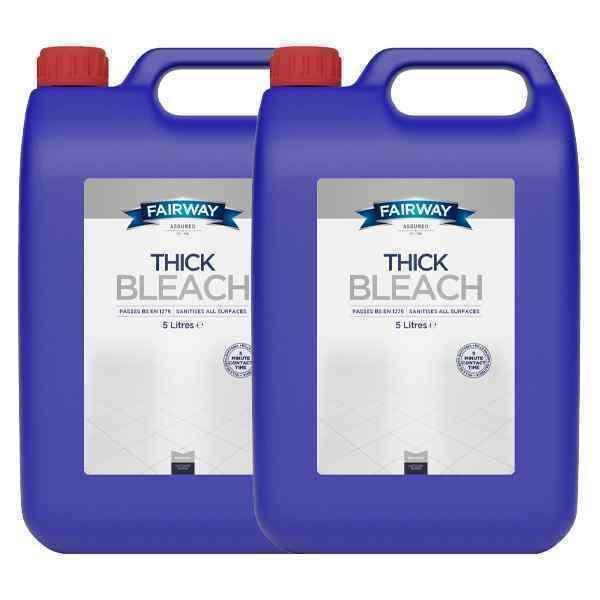2x5lt BOX FAIRWAY THICK BLEACH
2x5lt BOX FAIRWAY THICK BLEACH
Pricing
Description
2x5lt BOX FAIRWAY THICK BLEACH
For full product details please click here.
Please login to add items to your basket
Product Information
SODIUM HYPOCHLORITE, ALCOHOLS, C12-14, ETHOXYLATED, SULFATES, SODIUM HYDROXIDE
CORROSIVE LIQUID, N.O.S. (SODIUM HYPOCHLORITE, AMINES, C12-14 ALKYLDIMETHYL, N-OXIDES)
CORROSIVE LIQUID, N.O.S. (SODIUM HYPOCHLORITE, AMINES, C12-14 ALKYLDIMETHYL, N-OXIDES)
CORROSIVE LIQUID, N.O.S. (SODIUM HYPOCHLORITE, AMINES, C12-14 ALKYLDIMETHYL, N-OXIDES)
CORROSIVE LIQUID, N.O.S. (SODIUM HYPOCHLORITE, AMINES, C12-14 ALKYLDIMETHYL, N-OXIDES)
10.1. Reactivity Reactivity
10.2. Chemical stability Stability
The reactivity data for this product will be typical of those for the following class of materials: Acids. Alkalis. Oxidising materials.
Decomposes over time. Factors that increase the rate of decomposition: elevated temperature, certain metallic impurities, high initial concentration, fall in pH below 11, exposure to light.
Revision date: 02/04/2019 Revision: 4 Supersedes date: 05/05/2017
10.3. Possibility of hazardous reactions
Possibility of hazardous reactions
10.4. Conditions to avoid Conditions to avoid
10.5. Incompatible materials Materials to avoid
Contact with acids liberates toxic gas.
Avoid exposure to high temperatures or direct sunlight.
Acids. Ammonia. Organic compounds. Some metals (nickel, iron, copper).
10.6. Hazardous decomposition products
Hazardous decomposition Chlorine. Hydrogen chloride (HCl). Oxides of chlorine. Hypochlorous acid. Sodium chlorate.
15.1. Safety, health and environmental regulations/legislation specific for the substance or mixture.
The Control of Substances Hazardous to Health Regulations 2002 (SI 2002 No. 2677) (as amended).
Commission Decision 2000/532/EC as amended by Decision 2001/118/EC establishing a list of wastes and hazardous waste pursuant to Council Directive 75/442/EEC on waste and Directive 91/689/EEC on hazardous waste with amendments.
Regulation (EC) No 648/2004 of the European Parliament and of the Council of 31 March 2004 on detergents (as amended).
Regulation (EC) No 1907/2006 of the European Parliament and of the Council of 18 December 2006 concerning the Registration, Evaluation, Authorisation and Restriction of Chemicals (REACH) (as amended).
Regulation (EU) No 528/2012 of the European Parliament and of the Council of 22 May 2012 concerning the making available on the market and use of biocidal products (as amended). Commission Directive 2000/39/EC of 8 June 2000 establishing a first list of indicative occupational exposure limit values in implementation of Council Directive 98/24/EC on the protection of the health and safety of workers from the risks related to chemical agents at work (as amended).
EH40/2005 Workplace exposure limits
Containing the list of workplace exposure limits for use with the Control of Substances Hazardous to Health Regulations 2002 (as amended)
Health and Safety Executive
Guidance
15.2. Chemical safety assessment
No chemical safety assessment has been carried out.
P260 Do not breathe vapour/ spray.
P273 Avoid release to the environment.
P280 Wear protective gloves/ protective clothing/ eye protection/ face protection. P303+P361+P353 IF ON SKIN (or hair): Take off immediately all contaminated clothing. Rinse skin with water or shower.
P305+P351+P338 IF IN EYES: Rinse cautiously with water for several minutes. Remove contact lenses, if present and easy to do. Continue rinsing.
P363 Wash contaminated clothing before reuse.
H290 May be corrosive to metals.
H314 Causes severe skin burns and eye damage. H315 Causes skin irritation.
H318 Causes serious eye damage.
H400 Very toxic to aquatic life.
H410 Very toxic to aquatic life with long lasting effects. H412 Harmful to aquatic life with long lasting effects.
This information relates only to the specific material designated and may not be valid for such material used in combination with any other materials or in any process. Such information is, to the best of the company's knowledge and belief, accurate and reliable as of the date indicated. However, no warranty, guarantee or representation is made to its accuracy, reliability or completeness. It is the user's responsibility to satisfy himself as to the suitability of such information for his own particular use.



